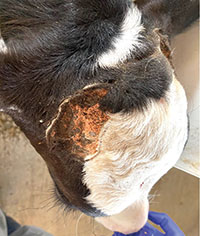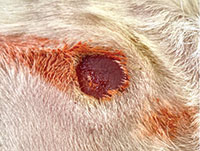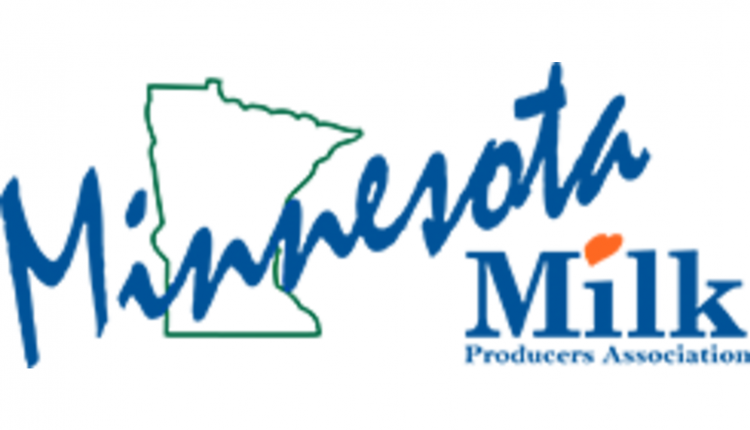Drwencke is a Ph.D. student at the University of California, Davis; Adcock is an assistant professor at the University of Wisconsin-Madison; and Tucker is a professor at the University of California, Davis.
Disbudding with caustic paste is typically done within the first week of life, and as early as the first 24 hours. Currently, there is only a small amount of research on caustic paste, but insights have been gained by looking at how farms use this disbudding method. When reviewing the information available, one thing that stands out is all the different ways paste is being used. Use differs by age, amount, spreading prevention, pain relief, risk of horn regrowth, and more.
It is important to apply enough paste to prevent horn growth. We did one pilot test using 0.05 milliliter (mL) of paste per horn bud at 3 days of age, and 46% of the horns regrew.

Paste manufacturers offer instructions such as “apply an amount the size of a quarter,” “apply a small, pea sized amount,” or “use 1/4 of a turn.” These recommendations cover a lot of ground in terms of how thick the paste is and what this might mean during application. We drew circles the size of a quarter and filled them with different amounts of paste, measured in a syringe, to illustrate this point (see Figure 2).

In a recent study, our team used 0.25 mL of paste per horn bud for calves less than 75 pounds and 0.3 mL for those 75 pounds or more. This was used to disbud both Jersey and Holstein calves on their third day of life. Both a lidocaine local block and NSAID were provided before paste was applied. The calves in our study did not have any horn regrowth.
Takes time to heal
To understand the effects of this method of disbudding, we scored wound healing twice per week and measured sensitivity around the wounds once per week. We found that caustic paste wounds in our study took 15 weeks to heal (see Figure 3). Additionally, calves that were disbudded with caustic paste were more sensitive to touch than nondisbudded individuals for at least the first six weeks of the healing period.

After six weeks, our nondisbudded calves were removed from the study to be hot iron disbudded, so sensitivity comparisons are not available beyond this point. The healing times (15 weeks) we saw in this single experiment are about double the six to 13 weeks it took hot iron disbudding wounds to heal in our other studies.
Stop the spread

The risk of burns occurring in unwanted places with paste can happen in both individually and socially housed calves as they can rub the paste on themselves or a pen mate. Keeping the amount of paste applied to a small quantity can help reduce the size of the burn and the risk of it spreading to unwanted areas.
This means we should try to control where the paste goes. Some farms use a balm or Vaseline to line the paste application and keep it in place. While this may work for some, in a pilot test, we found that Vaseline melted in the California heat and led to more running, which likely contributed to some horn regrowth during that study.
Some farms use duct tape over the paste in order to prevent the calves from rubbing it in unwanted areas. However, several producers reported in a survey that using tape led to the paste spreading and creating larger wounds, or they had more instances of infection when using tape. In our pilot study, we also had this happen when we tried to use duct tape.
Manufacturers recommend shaving the horn bud before applying paste. Depending on how the hair is clipped, it could hold paste in place. In our research, we have tried leaving the bud unclipped and rubbing the paste into the hair to help prevent spread, but we still had some problems with paste being rubbed on legs or parts of the hutch.
One practical solution that may help reduce extra burns is vinegar. Since the paste is basic and vinegar is acidic, we used vinegar to neutralize paste that spread to any unwanted areas on a calf. While this is not a perfect solution as it requires observing that the paste has been rubbed somewhere and wiping it off in a timely manner, vinegar was effective at neutralizing the acid and preventing extra burns.
Ease the pain
Research has shown that calves experience pain at the time of caustic paste disbudding, and there is no evidence that it is less painful than a hot iron. At the time of disbudding, two forms of pain relief should be provided to maximize relief. This includes giving both a local block such as lidocaine and a nonsteroidal anti-inflammation drug (NSAID) such as flunixin or meloxicam. Providing a local block is a cost-effective way to reduce pain at the time of disbudding for both a hot iron and caustic paste. While meloxicam requires extra label use approval from a veterinarian, it is currently the longest lasting NSAID available.
Despite common misconceptions, calves of all ages feel pain, including newborns. A combination of a local block and NSAID reduces pain to the greatest extent for both caustic paste and hot iron disbudding at the time of the procedure and in the initial healing phase.
While there are many unanswered questions surrounding the use of caustic paste, a few points are clear. First, both a local block and NSAID should be used to maximize pain relief. Second, wounds are painful to touch for at least six weeks. Third, caustic paste wounds take an average of 15 weeks to heal when using 0.25 or 0.3 mL of paste with no horn regrowth occurring. Keep these points in mind if caustic paste is used for disbudding on your dairy.







